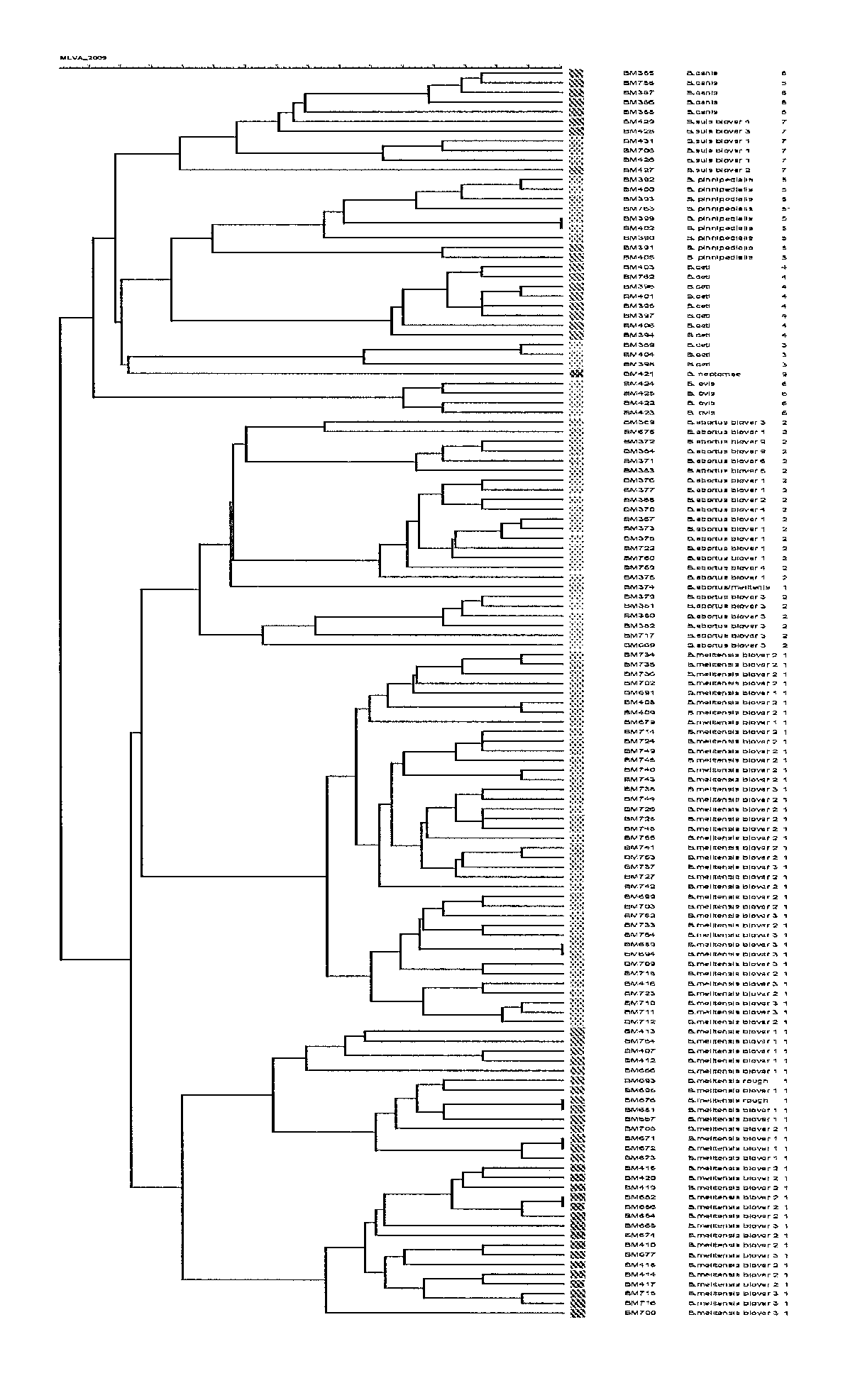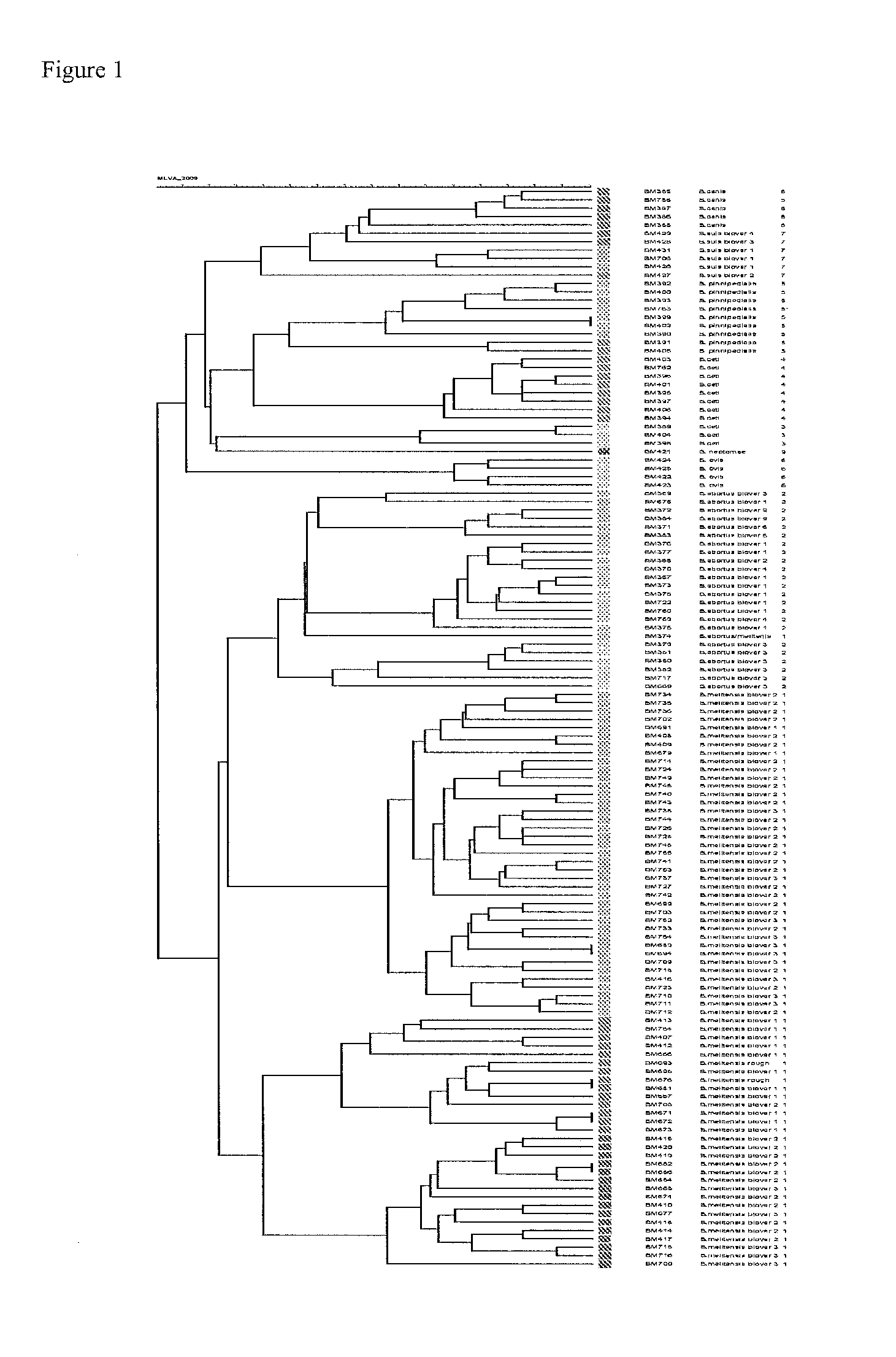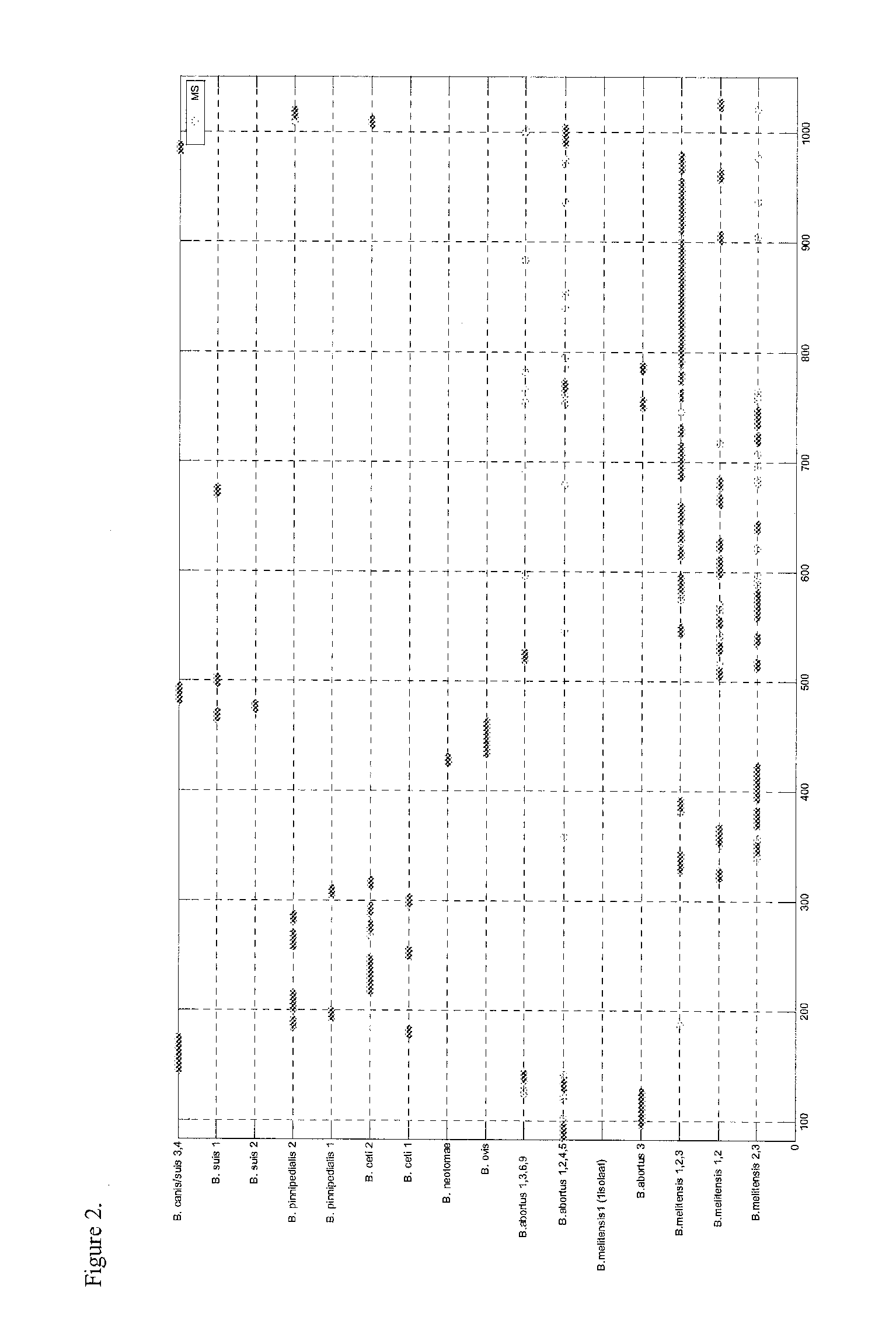New classification method for spectral data
a spectral data and classification method technology, applied in the field of spectrographic methods, can solve the problems of not adequately compensating for variability, giving more weight to the presence of peaks in the spectrum, and not giving, not giving or adequately compensating for the effect of variability
- Summary
- Abstract
- Description
- Claims
- Application Information
AI Technical Summary
Benefits of technology
Problems solved by technology
Method used
Image
Examples
example 1
[0065]The genus Brucella contains highly infectious species, able to cause infections in a wide variety of mammals. Until recently, six species where assigned to the Brucella genus, where some species contain different biovars: Brucella abortus (7 biovars), Brucella melitensis (3 biovars), Brucella suis (5 biovars), Brucella ovis, Brucella canis, and Brucella neotomae. Four new species have been described recently. Three of these species were isolated from ‘wild’ mammals and sea mammals: Brucella ceti, Brucella pinnipedialis, and Brucella microti. Finally, a new species was cultured from a breast implant infection and named Brucella inopinata (Scholtz, H. C. et al., 2010, Int J Syst Evol Microbiol. 60:801-808).
[0066]To improve the discriminatory power of MALDI-TOF MS based identification of Brucella isolates, a new approach was developed. First, Multi Locus Variable number tandem repeat Analysis (MLVA) was performed on 129 samples. MLVA clustering divided the isolates into 16 cluste...
example 2
[0073]Samples were constructed using spores, wheat and coffee creamer that were also used to generate MS-spectra for in the reference library. Each sample was measured four times. MS-spectra were measured as follows:[0074]Spin 300 μl Bacillus spores suspension 2 min. with 10,000 g.[0075]Remove solution and mix pellet with 10 μl 70% formic acid and 10 μl acetonitrile (absolute).[0076]Transfer the mixture directly on a luer-lock filter unit (Millex-GV4). Put the filter on to 1 ml syringe and press the mixture in a tube.[0077]Spot 1 μl on a plate. Air dry the spot.[0078]Spot 0.5 μl HCCA matrix. Air dry the spot again.[0079]Generate MS-spectra as descript in first step.
[0080]The generated MS-data were normalized. Subsequently, a peak list was generated of each sample. Because samples could contain a mixture or a low amount of a particular agent the selection criteria were lowered compared to peak selection for constructing the library. Peaks selection was based on reproduci...
PUM
 Login to View More
Login to View More Abstract
Description
Claims
Application Information
 Login to View More
Login to View More - R&D
- Intellectual Property
- Life Sciences
- Materials
- Tech Scout
- Unparalleled Data Quality
- Higher Quality Content
- 60% Fewer Hallucinations
Browse by: Latest US Patents, China's latest patents, Technical Efficacy Thesaurus, Application Domain, Technology Topic, Popular Technical Reports.
© 2025 PatSnap. All rights reserved.Legal|Privacy policy|Modern Slavery Act Transparency Statement|Sitemap|About US| Contact US: help@patsnap.com



